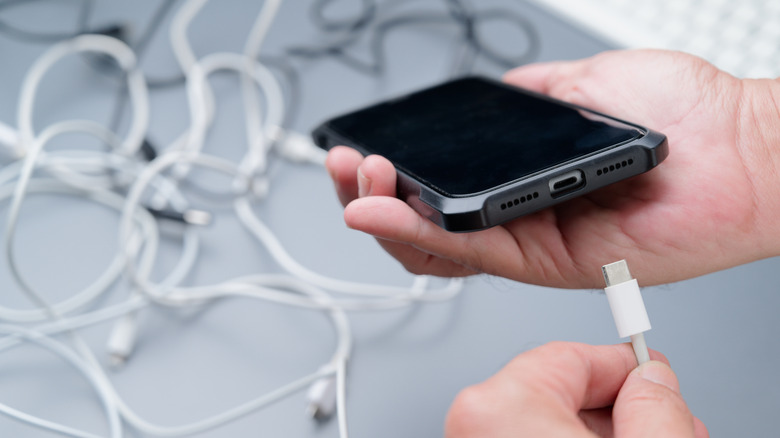How Long Can A USB Cable Be Without Slowing Down?
Finding the best USB cables for your device can be tricky. Not only do you have to worry about the different USB cable types and speeds, but you have to worry about whether or not you're buying one that is long enough. Which raises another concern: At what point is a USB cable going to be too long? Does the length of the USB (which stands for Universal Serial Bus) cable actually matter when it comes to data transfer speeds and efficiency? The short answer here is yes, it does.
The slightly longer answer is that it matters more based on the type of cable you're picking up. While this article won't break down details like the difference between USB4 and USB-C, it will give you a better idea of what to expect from a new USB cable and just how long it can be, while remaining effective. The longer a USB cable is, the more likely you are to see the signal degrade. This can mean slower transfer speeds, as well as lower power output.
Because of this, it is important to have a good idea of what the different types of cables support. USB cables aren't a one-size-fits-all solution. There are multiple types of USB connectors and multiple types of USB cables. Depending on the cable type, you may have a bit more or less wiggle room when it comes to efficiency based on length.
Maximum recommended lengths for USB cables
USB 1.1 cables — which are the earliest adopted version of the USB standard — support a maximum length of around 16.4 feet. Compared to modern connectors, these cables have vastly lower data transfer speeds, just 12 Mbps. Moving up to a USB 2.0 cable, you can expect usability for the same length of 16.4 feet, though these cables can handle up to 480 Mbps of data transfer speed.
With the USB 3.0 and USB 3.1 standard, max cable length is only 9.8 feet, but transfer rates improve to 5Gbps and 10Gbps, respectively. USB 3.2 brings another large jump in performance and speed, with those USB cables sporting up to 20 Gbps transfer speeds, but only offering that performance across 2.6 feet of cable, as that helps maintain the highest quality for a reliable signal.
USB4 features data transfer rates of up to 40Gbps, but also tops out at a maximum recommended cable length of 2.6 feet. As for USB4 Version 2.0, the latest iteration of the standard — and the fastest — it has a top speed of 120 Gbps in one direction, but cable lengths tend to max out around 3 feet or so before a drop-off in performance occurs.

